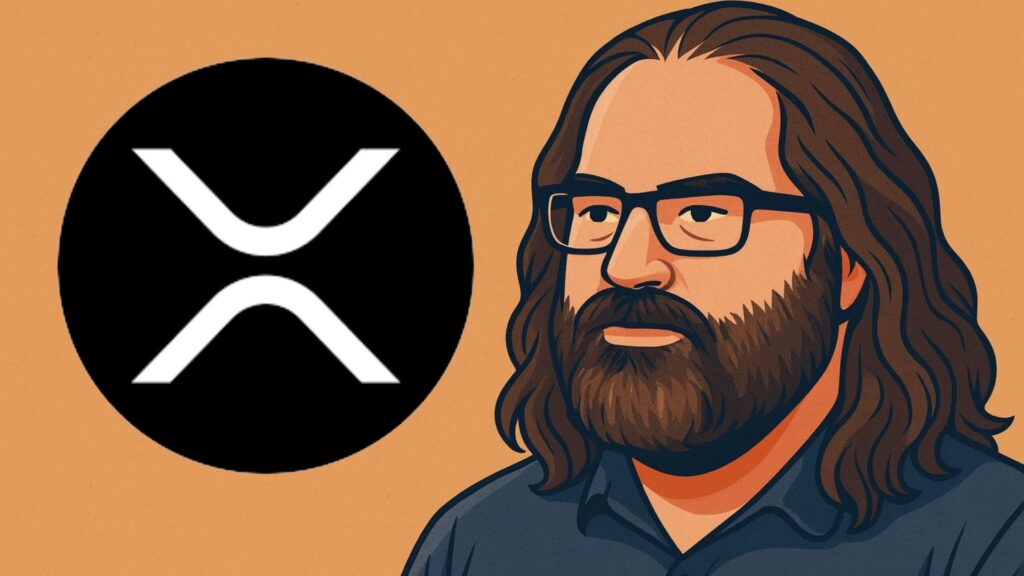The crypto market has been showing signs of recovery, but Ripple has just delivered news that has shaken its community.
David Schwartz, Ripple’s Chief Technology Officer and one of the original architects of the XRP Ledger, has announced that he will step down from his executive role at the end of the year.
For a company that has relied heavily on his technical expertise and presence, this moment feels significant. The key questions now are how Ripple will adapt to his departure from day-to-day duties and what his continued involvement means for the future of XRP.
The CTO’s Departure and His Farewell
David Schwartz is not an ordinary executive. Known widely in the crypto community as “JoelKatz,” he has been at Ripple for more than a decade and played a central role in designing and coding the XRP Ledger alongside Arthur Britto, Jed McCaleb, and Chris Larsen.
His technical leadership and outspoken defence of XRP’s design have made him one of the most visible figures associated with Ripple.
In his announcement, Schwartz reflected on his long journey. He spoke of starting as a consultant for the NSA, then discovering Bitcoin in its earliest stages, before moving on to co-create the XRP Ledger and eventually becoming Ripple’s CTO.
He described the experience of working at Ripple as one of the greatest honours of his career, second only to his family.
He made it clear that this decision was not a complete exit. Schwartz explained that he will remain connected as CTO Emeritus and will also join Ripple’s Board of Directors.
This role allows him to step back from operational responsibilities while still contributing to the company’s strategy and technical direction.
He emphasised that he would continue to be part of the XRP community, coding, running his own XRPL node, and exploring new use cases for the token beyond Ripple’s core business.
His farewell note included words of gratitude to the leadership team and the wider community. He singled out CEO Brad Garlinghouse, President Monica Long, Chris Larsen, and the engineering team as the people who will carry Ripple into its next phase.
He also expressed confidence in Dennis Jarosch, Senior Vice President of Engineering, to guide Ripple’s technical direction after his departure.
For many, the announcement feels bittersweet. On one hand, it marks the end of an era defined by Schwartz’s influence. On the other hand, his decision to remain as an advisor and board member offers reassurance that Ripple will not lose his technical vision entirely.
What Happens Next for Ripple’s Leadership
The most immediate question is what Ripple looks like without Schwartz in the daily CTO role. Over the years, he has been both a technical leader and a symbolic figure for the XRP community.
His presence gave Ripple credibility during its toughest moments, especially throughout the prolonged legal battle with the U.S. Securities and Exchange Commission. Now that the case has been settled, Ripple enters a new era with a different kind of leadership dynamic.
Operationally, Ripple’s technical team is well-established. The transition places more responsibility on leaders like Dennis Jarosch, who has already been guiding engineering efforts, and Monica Long, who has been central in strengthening Ripple’s institutional and ecosystem relationships.
Schwartz himself noted that he has full confidence in the next generation of Ripple leaders and the broader XRP developer community to take the project forward.
From a strategic perspective, his move to the board ensures continuity. It allows Ripple to continue drawing on his technical insight without relying on him for everyday execution.
This model mirrors how many technology firms manage transitions: shifting visionary figures into roles where they provide guidance rather than operational management.
For the XRP community, this change means adaptation. Schwartz has often been the voice responding to criticism, clarifying misconceptions, and defending XRP’s design as decentralised and enterprise-ready.
The community will now look to other Ripple leaders to maintain that visibility and presence. The company’s credibility with regulators, institutions, and developers will depend on how quickly and effectively these figures establish themselves as trusted representatives.
At the same time, Ripple’s environment is shifting. With the SEC lawsuit resolved, Ripple enjoys regulatory clarity that strengthens its ability to attract institutional partners.
Its introduction of RLUSD, a U.S. dollar stablecoin, shows its ambition to expand beyond XRP into broader tokenisation use cases.
The task of the new leadership is not just to preserve Schwartz’s legacy but to leverage these opportunities to expand Ripple’s footprint in global finance.
The transition could also inject fresh momentum. New leadership often brings new perspectives, which may help Ripple adapt to changing conditions in the digital asset market.
Schwartz himself highlighted his excitement at returning to hands-on coding and experimentation, which could still bring valuable innovations to the XRP Ledger ecosystem from outside the executive suite.
Conclusion
The resignation of David Schwartz as Ripple’s CTO is a defining moment for both the company and the XRP community. His decision to step back from daily responsibilities marks the end of more than a decade of direct technical leadership, but it does not mean his influence will disappear.
By remaining as CTO Emeritus and joining Ripple’s Board of Directors, Schwartz ensures that his guidance will continue to shape the company’s strategy and development.
For Ripple, the challenge now is to prove that it can continue to innovate and expand without relying on him as the day-to-day technical leader.
Strong successors are already in place, and with regulatory clarity and growing institutional interest, Ripple has a foundation to move confidently into its next chapter.
If managed well, this transition could demonstrate that Ripple is not defined by a single individual but by a collective vision that continues to evolve.

